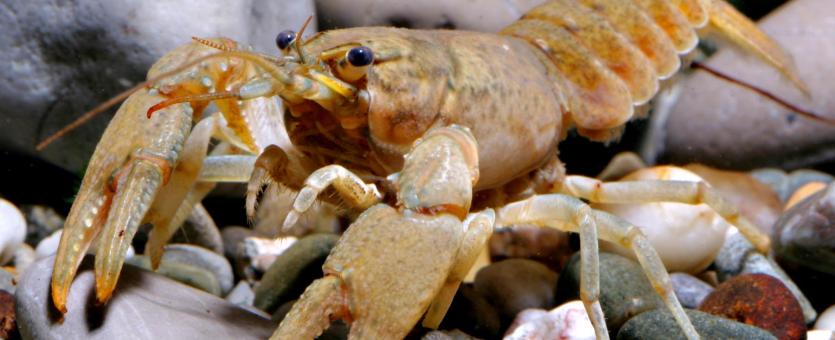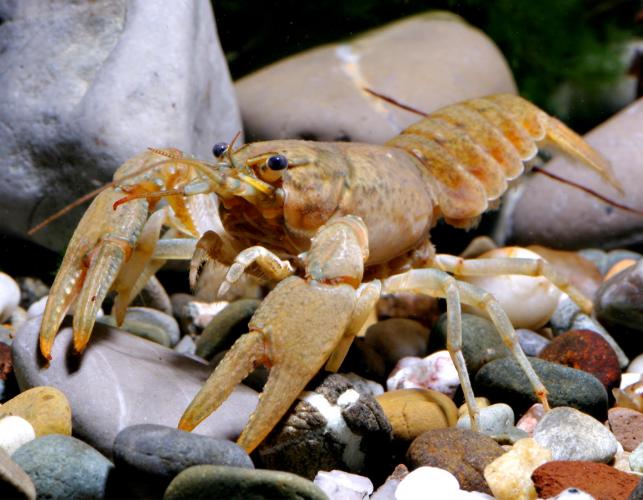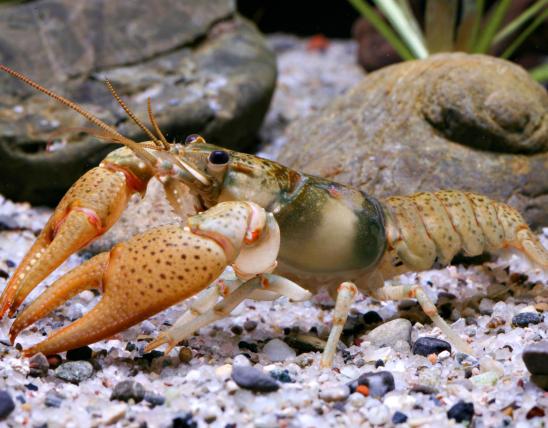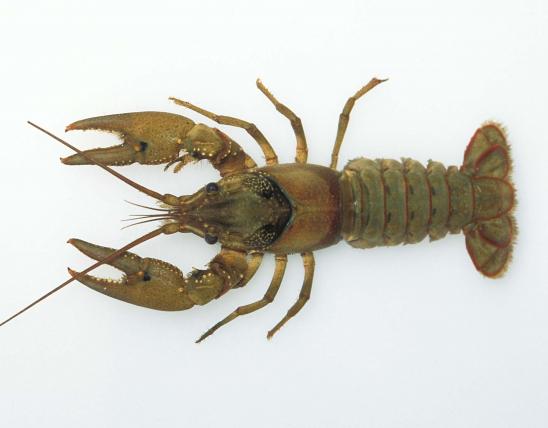
Williams' crayfish is a small, rather plain crayfish without bright colors or bold markings. Its most distinctive feature is a pale, vase-shaped zone along the middle of the dark olive-tan carapace. The pincers are broad and powerful.
Similar species: Within the range of Williams' crayfish, similar species are the Ozark crayfish, which has numerous dark specks on the pincers and abdomen, and the ringed crayfish, which has a prominent black or brown ring near the tips of the fingers. These species reach a larger size than Williams' crayfish.
Adult length: about 1¼ to 2 inches.

Williams’ crayfish occurs in the White River and Elk river basins of Missouri and Arkansas. It has also been recorded in Roaring River and a few other streams of southern Barry, Stone, Christian, and Taney counties.
Habitat and Conservation
Inhabits clear, rocky and gravelly headwater creeks, spring branches, and cave streams. It excavates burrows beneath large rocks in gravelly and sandy substrates.
This species has experienced loss of habitat due to the construction of large reservoirs on the White River.
Food
Crayfish are generally omnivores, eating a wide variety of plant and animal materials.
Status
Imperiled in Missouri, due to its very localized distribution. A species of conservation concern in Missouri.
Life Cycle
Very little is known about the reproduction of this species. Most other Ozark stream crayfish mate in the fall and bear eggs in the spring. The female carries the eggs, then the young, beneath her abdomen, until the young are capable of living independently. Most of our crayfish only live to be a few years old.
Human Connections
Crayfish are colorful and interesting animals. They are important members of aquatic communities, influencing the health of ponds, lakes, and streams and therefore contributing to the success of anglers, froggers, and bird watchers.
The "Williams" of Williams' crayfish (F. williamsi) was Austin Beatty Williams (1919-1999), a zoologist based at the National Museum of Natural History, Smithsonian Institution. A native of Plattsburg, Missouri, his career spanned five decades, and his intensive studies of Ozark crayfishes and other crustaceans resulted in the recognition of numerous taxa new to science, including the coldwater crayfish and the Ozark crayfish. He was a leading expert on decapod crustaceans in the eastern United States, and his 1984 book, Shrimps, Lobsters, and Crabs of the Atlantic Coast of the Eastern United States, was perhaps his best-known publication. In 1966, the zoologist J. F. Fitzpatrick formally described this new species and named it Williams' crayfish in his honor.
Ecosystem Connections
Crayfish are an important link in the food chain between plants and other animals, breaking down plant materials that are resistant to decay. They are an important food for many animals that occur around or in water, including fish, snakes, turtles, wading birds, raccoons, and mink.



























